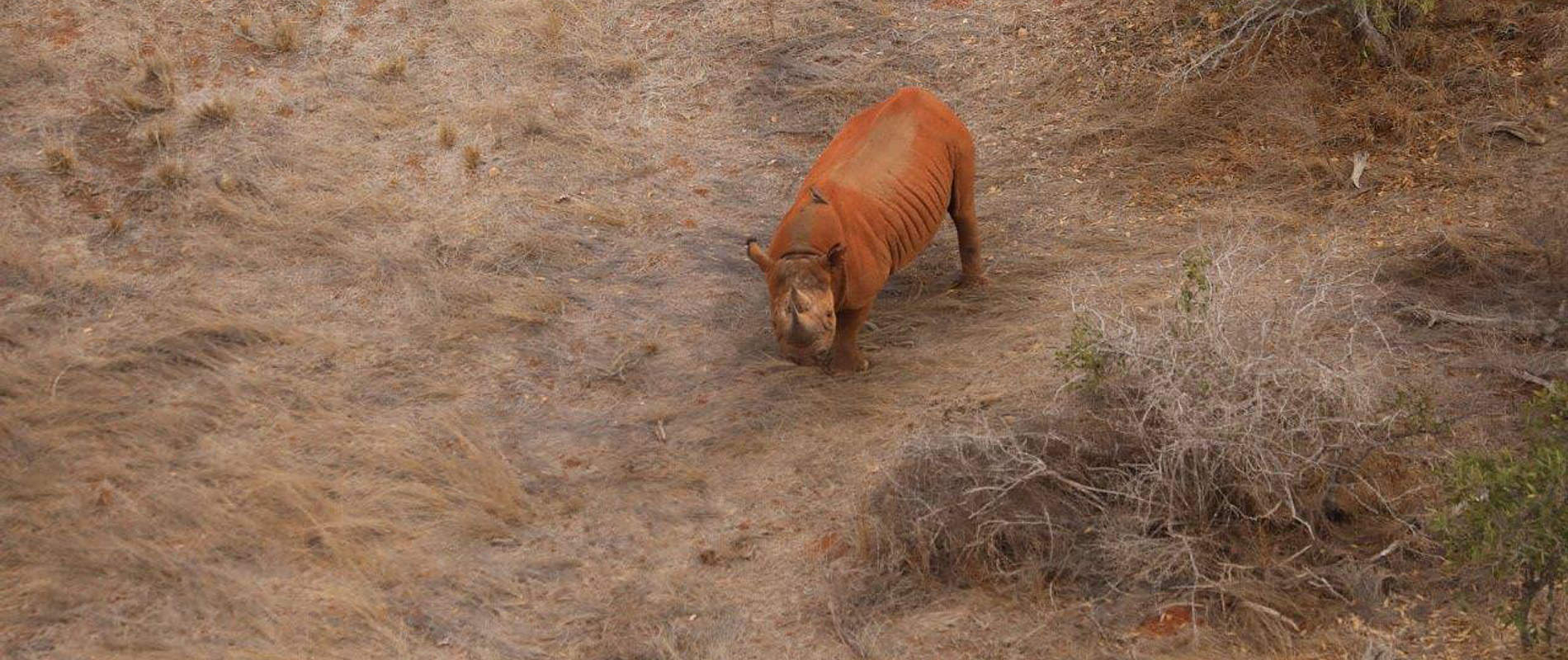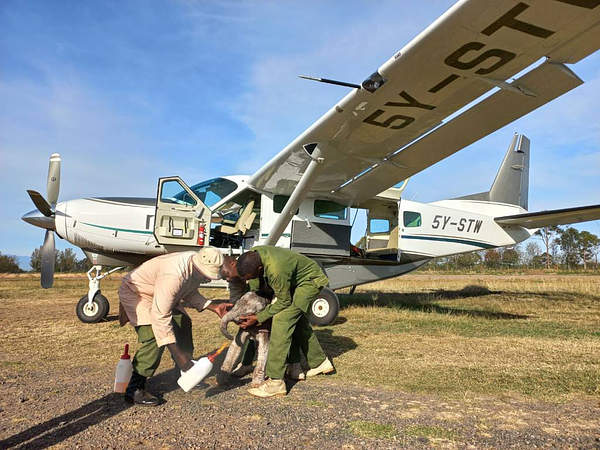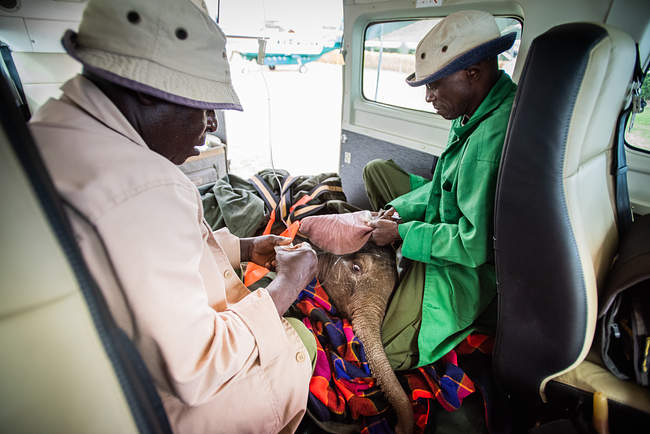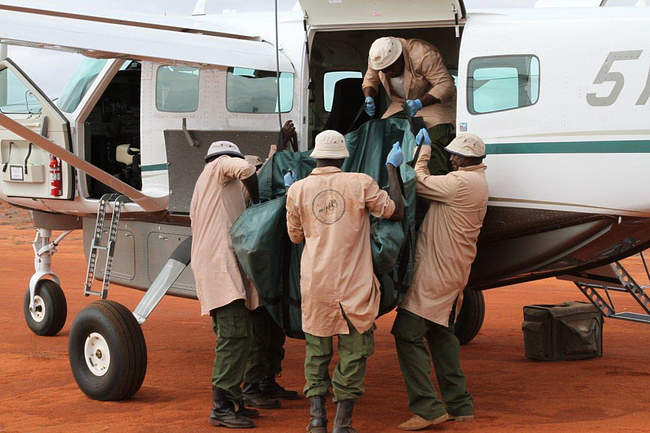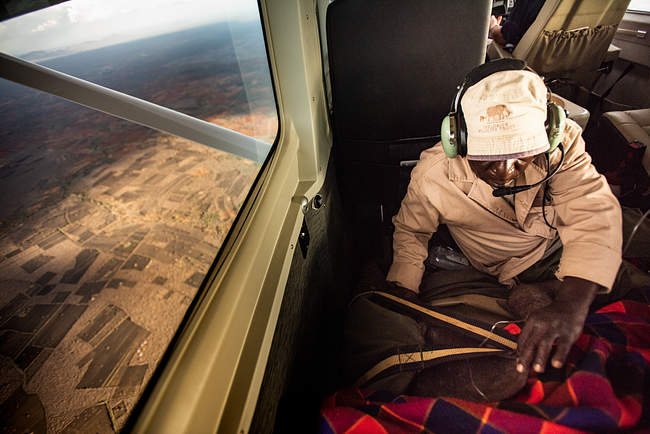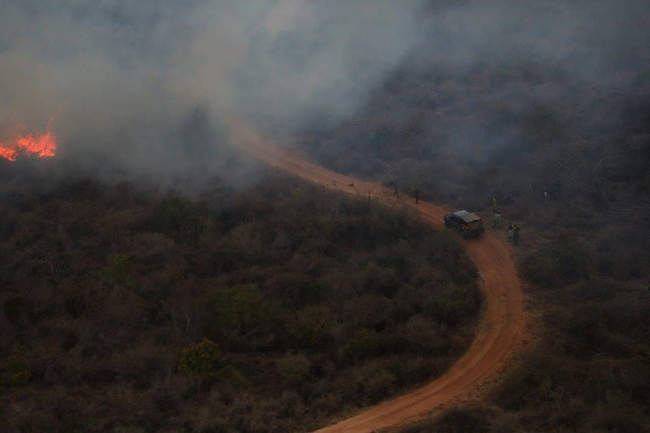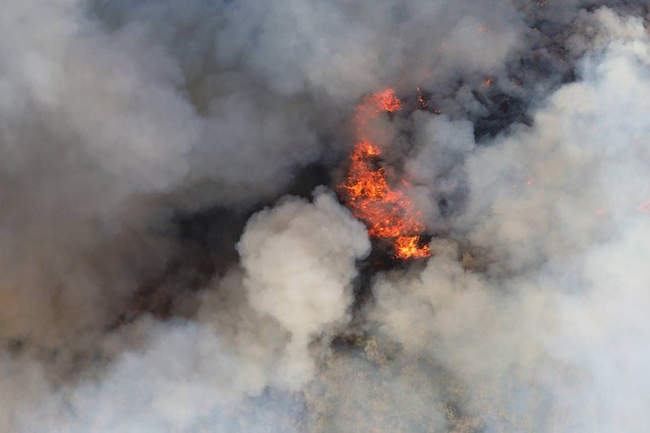The drought, affecting the Greater Tsavo Conservation Area, really began to take a toll on wildlife and livestock during November. There were a few, isolated rain storms, especially in the north east of Tsavo East NP, but most of the park remained bone dry. This is unusual as the rains normally start in late October or early November.
In Tsavo West NP, eland were particularly hard hit. In Tsavo East, elephants were unfortunately badly affected too. Our pilots found a total of 6 elephant carcasses, all thought to be drought victims, representing a fraction of the deceased elephants found in the park by all of the stakeholders. Between ground teams, tour operators and other pilots, carcasses were discovered on a daily basis in November. Sadly, most of these victims were young calves.
In addition to carcasses, 3 abandoned elephant calves were rescued in Tsavo by the SWT helicopter and Cessna Caravan. One was found stuck and abandoned in a mud hole, another was found collapsed, the third was found standing next to its dead mother, another drought victim. The Caravan was called out to collect a fourth young calf from Satao, but sadly it passed away before it could be rescued. Another 2 orphaned elephant calves were rescued from up country. The first from Ragati Conservancy in Mount Kenya, which was airlifted by the SWT helicopter to Nanyuki Airfield and then transported by our Caravan to the Trust's Neonate Nursery in Kaluku. Another tiny elephant, estimated to be one week old, was rescued from Dol Dol in a chartered helicopter and then airlifted again by the Trust’s Caravan to Kaluku. In addition to elephant calves, we also received a request to rescue a baby hippo from Garsen in Tana River County. A tiny premature hippo still carrying its umbilical cord, had been found alone next to a drying pond. Its mother had obviously abandoned the baby, who was unable to travel the distances required to reach water. This story unfortunately had an unhappy ending, as the hippo’s condition declined rapidly after arrival at the nursery, and she passed away shortly after.
Three vet cases were attended to with assistance from the Aerial Unit. An elephant, suffering from a spear wound on the nape of its neck, was darted from the helicopter and successfully treated, with an excellent prognosis for recovery. A female elephant sighted on the Teita Estate, with 3 spear wounds, was also darted from a helicopter and treated, however, she was given a guarded prognosis due to the severity of the wounds. Finally, KWS Vet Dr Poghon, of the SWT/KWS Tsavo Veterinary Unit, was also flown up to Ithumba in the northern area of Tsavo East to treat ex orphan Sidai. She had returned to the stockades with a newborn calf, but also sporting a poison arrow wound. Read the full account of her successful treatment.

Bull elephant receives treatment for spear wound to his nape
Despite the severity of the conditions brought on by the drought, our aerial teams encountered very little evidence of poaching inside the park. No charcoal activity was seen within Tsavo East of West, but large scale charcoal operations were observed throughout the month on both Galana and Kulalu Ranches, which border Tsavo East. Livestock pressure reached a peak for the year in November, although numbers along the Tiva River were reduced by persistent KWS operations to push them out of Tsavo East.
A total of 9 Human-Elephant Conflict callouts were responded to by helicopter, pushing elephants out of communities and back into protected areas. Other callouts involved elephants deep within settled areas down on the Tanzania border. On one occasion our helicopter pushed a group of 4 bulls a total of 12 km to get them to safety.
Fortunately, only two fires required attendance from the SWT in November, both near Kibwezi Forest in the Chyulu Hills National Park.
Sighting highlights included a staggering 41 rhinos on one patrol, and repeated sightings of a packs of wild dogs, often up to twenty strong in number. Pilots were also treated to regular sightings of lions and a chance sighting of a pair of honey badgers.
